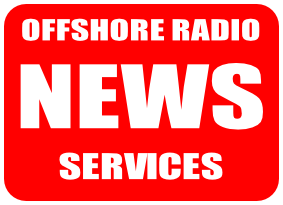© 2014-


Gallery
11
News bulletins featured on many offshore stations -
This Gallery examines how a range of offshore stations sourced and delivered their news services with many audio recordings of bulletins and the jingles used to introduce them..

Although most offshore radio stations had a high music content format – indeed that was one of the main reasons they existed – it was soon realised that the inclusion of news was an important element in keeping audiences tuned in.
Without such a service it was likely that many listeners would tune away to one of the 'established' stations to hear the news and probably not re-
Isolated
However, the isolated situation of offshore stations meant that, unlike their landbased counterparts, they could not operate a conventional newsroom with journalists and reporters available to cover stories.
The answer? -
This was the reason that many offshore stations broadcast their news at unusual times -
Newsreaders or DJs on board the ships or forts would monitor the output of 'official' stations as well as international output from the BBC World Service, Voice of America or shortwave broadcasts from America, Canada and Europe.
They then re-
Teletext arrives
Offshore stations in the 1970s and 1980s, in particular Radio Caroline, Radio Mi Amigo, Radio Monique and Laser, benefited from the availability of Teletext news services on television, providing a constantly up-
Re-
Despite the widespread practice amongst offshore stations of ‘pirating’ news sources in this way one station in particular regularly re-
The Voice of Peace relayed live the hourly bulletins of state broadcaster, Kol Israel, removing the need for on-
Why have news and how was it gathered?






A number of stations did try and adopt more conventional or professional approaches to providing their news services.
Under the influence of one of its American backers Sweden's Radio Nord, made elaborate arrangements to gather its news. However, following the withdrawal of ship-
Radio London before it even came on the air tried to obtain a legitimate source of news, but when all attempts failed that station too had to resort to 'pirating' the BBC's output.
Laser even had the forethought to load two PAL system television receivers on board the Communicator before she left Britain to be fitted out in America as a radio ship. American televisions, which operate on a different system, would have been unable to receive the output of British teletext services.
Professional approaches

Let’s take a closer look at some of the offshore news services.
- Voice of Peace
- Radio Nord
- Radio London
- Radio Caroline
- Radio Veronica
- Radio Mercur
- News Snippets




Floor 2
Back to
















Contact:-